 |
 |
 |
| |
LONG-ACTING CABOTEGRAVIR+RILPIVIRINE
IN OLDER ADULTS: POOLED PHASE 3 WEEK-48 RESULTS
|
| |
| |
CROI 2021 March 6 Reported by Jules Levin
Paul Benn1, Samia Dakhia1, Sterling Wu2, Krischan J. Hudson3, Yuanyuan Wang2, Ronald D'Amico3, Vasilki Chounta1, Susan L. Ford4, Rodica Van Solingen-Ristea5, Simon Vanveggel5, Veerle Van Eygen5, Joseph W. Polli3, Kimberly Smith3, William R. Spreen3
1ViiV Healthcare, Brentford, UK, 2GlaxoSmithKline, Collegeville, PA, USA, 3ViiV Healthcare, Research Triangle Park, NC, USA, 4GlaxoSmithKline, Research Triangle Park, NC, USA, 5Janssen, Beerse, Belgium
Background: Cabotegravir (CAB) and rilpivirine (RPV) long-acting (LA) dosed intramuscularly every 4 weeks (Q4W) was noninferior to daily oral standard of care (SoC) in the ATLAS (NCT02951052) and FLAIR (NCT02938520) Phase 3 studies. CAB+RPV LA dosed every 8 weeks (Q8W) was noninferior to Q4W dosing in the Phase 3b ATLAS-2M study (NCT03299049). Owing to the benefits of ART, there is an increasing proportion of people living with HIV (PLWH) aged ≥50y. Efficacy, safety, adherence, and treatment satisfaction outcomes stratified by age (≥50y and <50y) across the ATLAS, FLAIR, and ATLAS-2M studies at Week (W) 48 are reported.
Methods: Pooled data from the three studies were stratified by age (≥50y and <50y). For participants in ATLAS-2M who transitioned from ATLAS LA therapy, only data from ATLAS were included. W48 primary and secondary efficacy endpoints were the proportion of participants with plasma HIV-1 RNA ≥50 c/ mL (virologic nonresponse) and HIV-1 RNA <50 c/mL (virologic suppression), respectively (FDA Snapshot, intention-to-treat exposed). Adherence, safety, incidence of confirmed virologic failure (CVF; two consecutive measurements of ≥200 c/mL), and treatment satisfaction (as measured by HIVTSQs) at W48 were secondary endpoints.
Results: In total, 399 aged ≥50y and 1437 participants aged <50y were randomized to either CAB+RPV LA Q8W (≥50y, n=89; <50y, n=238), Q4W (≥50y, n=185; <50y, n=733), or SoC (≥50y, n=125; <50y, n=466). Table 1 shows baseline characteristics and key outcomes. Virologic outcomes were similar across arms and age groups; rates of virologic suppression were high (∼92-97%) and rates of nonresponse were low (∼2%). CVF rates were similarly low across arms and age groups. Safety profiles between participants ≥50y and <50y were similar for both LA regimens; few adverse events led to withdrawal. Injection site reactions were similar in frequency and severity across LA arms and age groups, with a median duration of 3 days. Mean change (SD) from baseline in total treatment satisfaction was higher in the LA arms vs. SoC but was comparable between age groups (Q8W W48: ≥50y, 5.0 [9.18]; <50y, 4.8 [9.99]; Q4W W44: ≥50y, 5.6 [9.50]; <50y, 4.0 [9.43]; SoC W44: ≥50y, 0.4 [7.36]; <50y, 0.7 [9.02]).
Conclusion: CAB+RPV LA demonstrated similar efficacy, safety, and tolerability between participants aged ≥50y and <50y. Treatment satisfaction improved from baseline with CAB+RPV LA and was comparable by age. These data support the therapeutic potential of CAB+RPV LA in older PLWH.
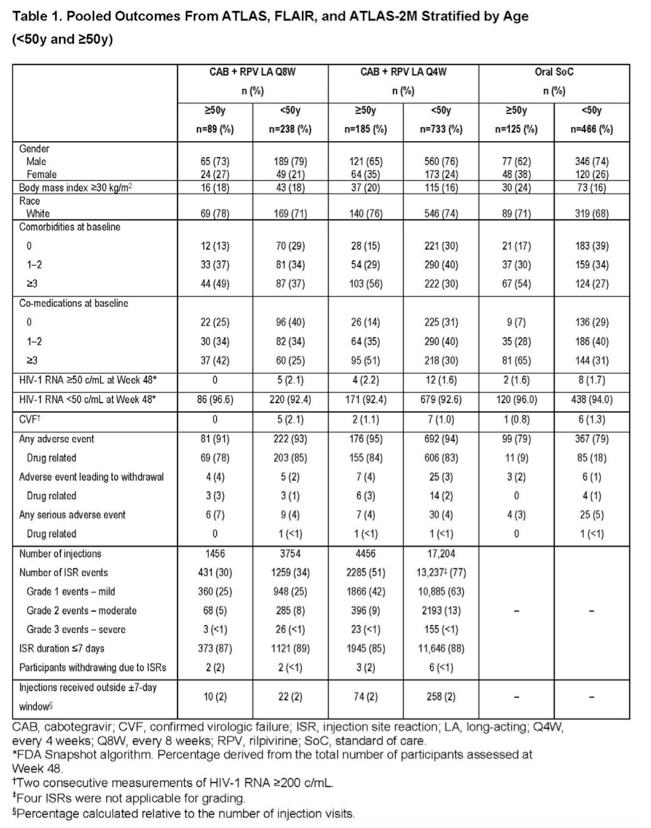

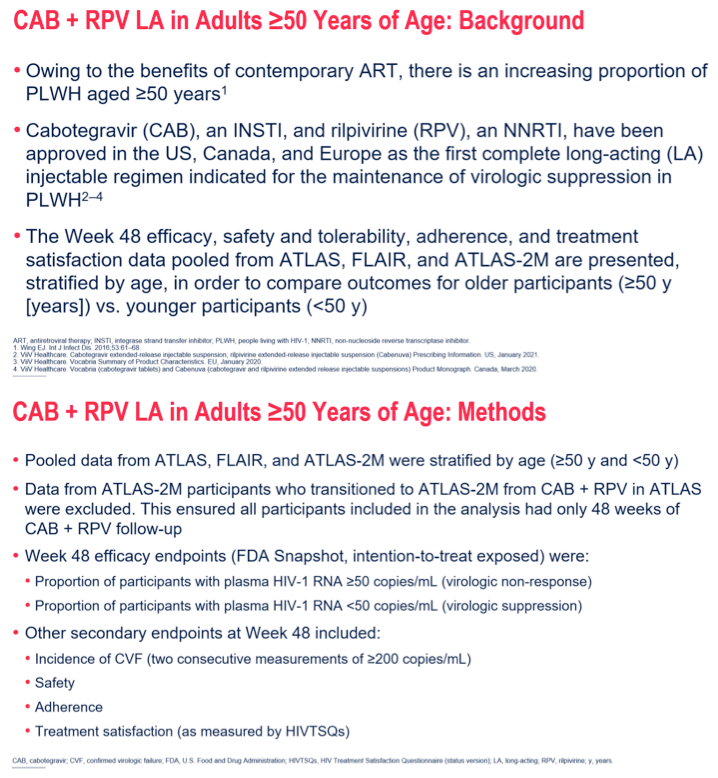
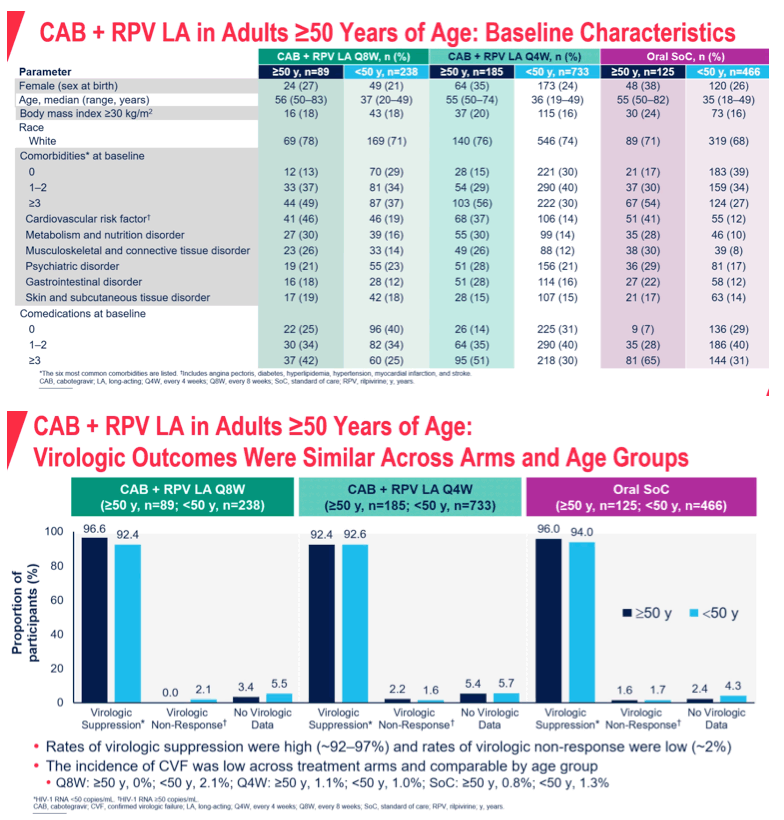
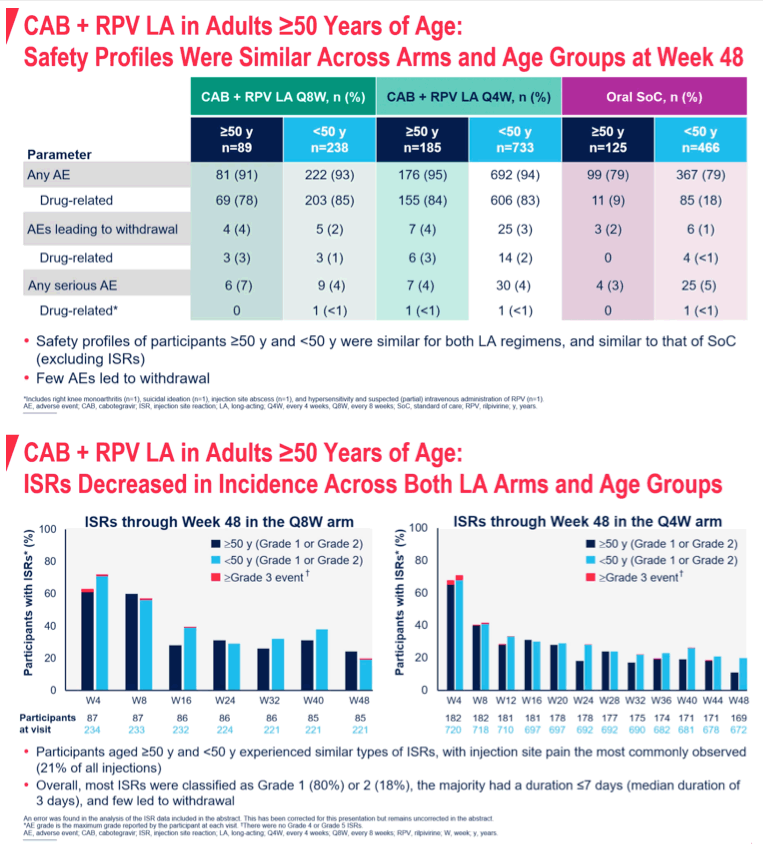
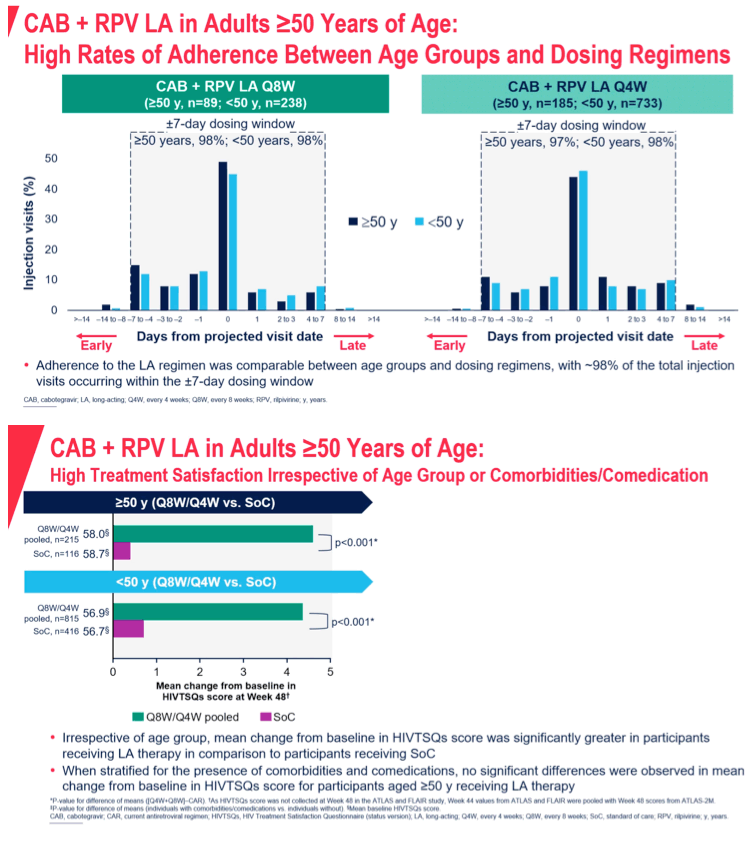
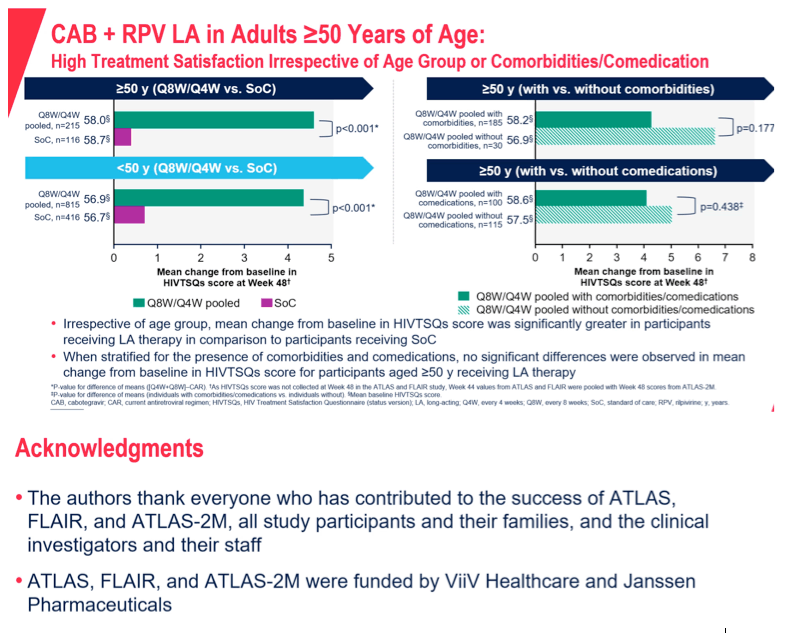
|
| |
|
 |
 |
|
|